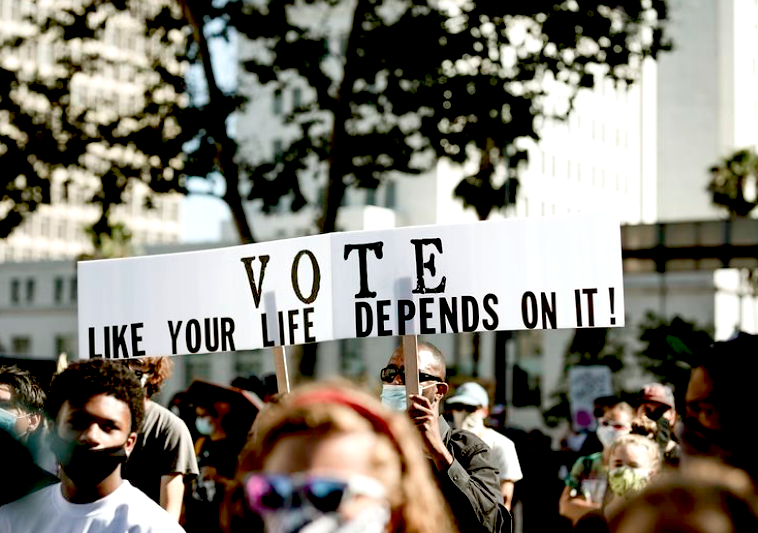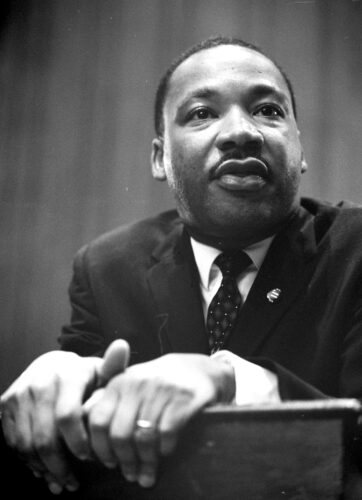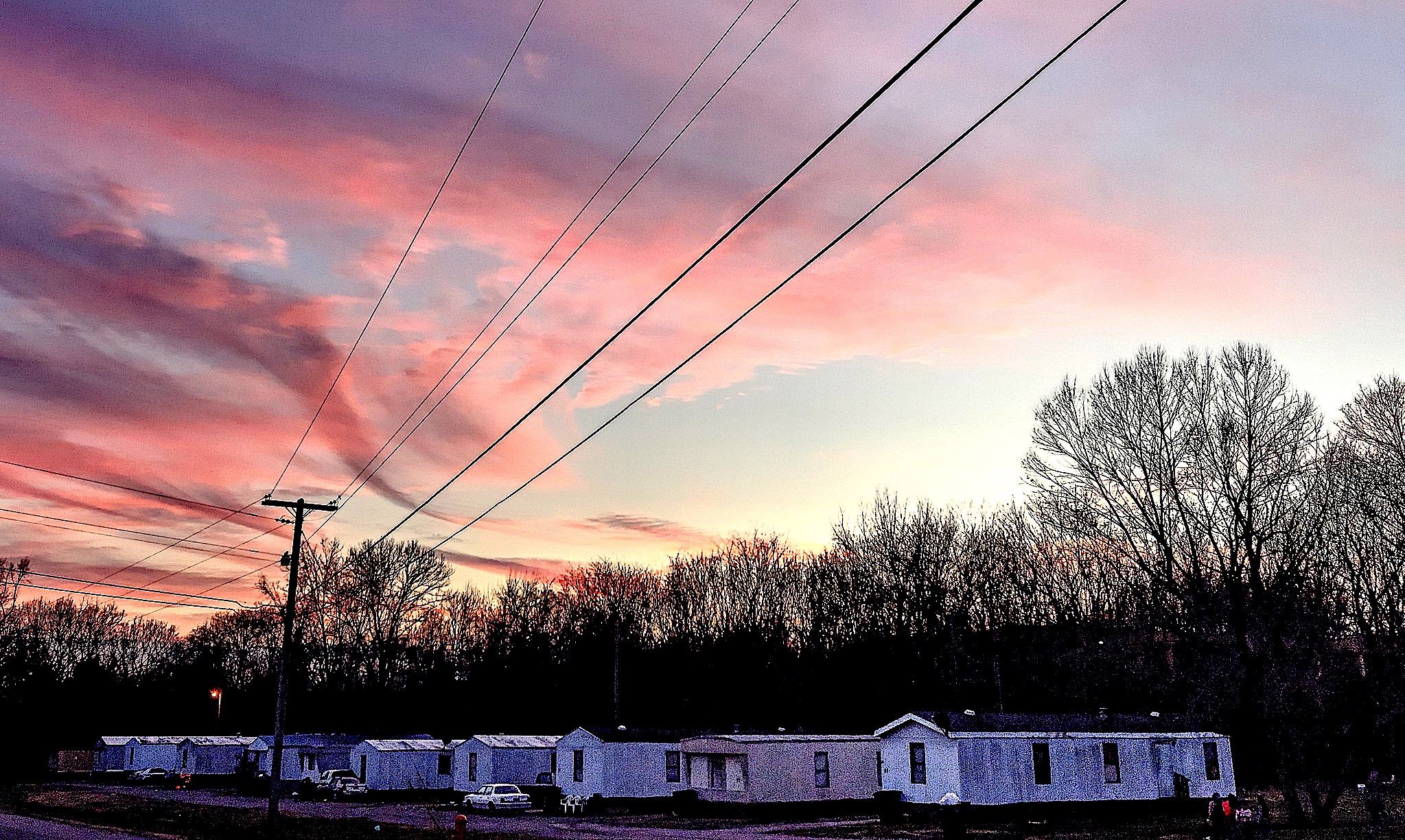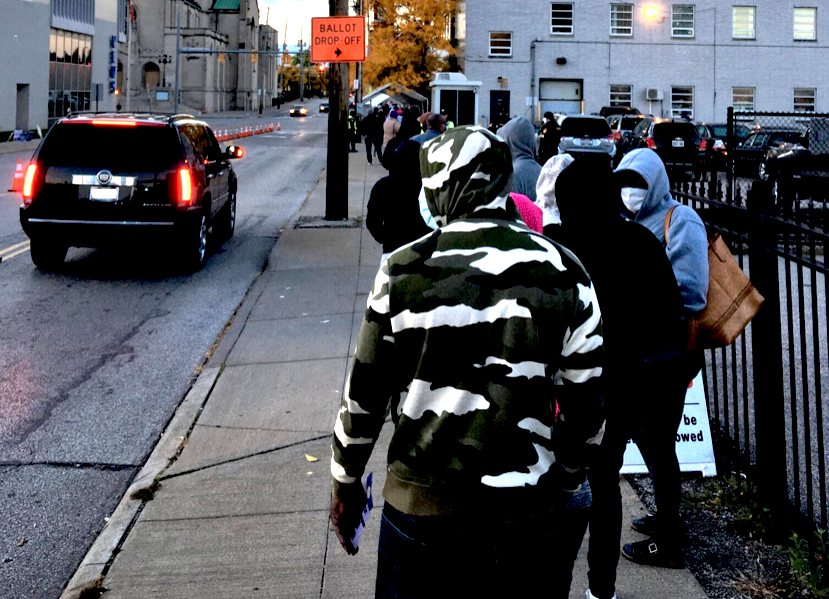Given the breadth and depth of deprivation in the richest country in the world, it should be surprising how little attention has been paid to the priorities of poor and low-income voters in the 2022 election season, writes Liz Theoharis.

(RawPixel)
By Liz Theoharis
TomDispatch.com
 Ours is an ever more unequal world, even if that subject is ever less attended to in the United States. In his final book, Where Do We Go From Here?, Reverend Martin Luther King wrote tellingly,
Ours is an ever more unequal world, even if that subject is ever less attended to in the United States. In his final book, Where Do We Go From Here?, Reverend Martin Luther King wrote tellingly,
“The prescription for the cure rests with the accurate diagnosis of the disease. A people who began a national life inspired by a vision of a society of brotherhood can redeem itself. But redemption can come only through a humble acknowledgment of guilt and an honest knowledge of self.”
Neither exists in this country. Rather than an honest sense of self-awareness when it comes to poverty in the United States, policymakers in Washington and so many states continue to legislate as if inequality weren’t an emergency for tens, if not hundreds, of millions of us. When it comes to accurately diagnosing what ails America, let alone prescribing a cure, those with the power and resources to lift the load of poverty have fallen desperately short of the mark.
With the midterm elections almost upon us, issues like raising the minimum wage, expanding healthcare, and extending the Child Tax Credit (CTC) and Earned Income Tax Credit should be front and center.
Instead, as the U.S. faces continued inflation, the likelihood of a global economic recession and the possibility that Trumpists could seize control of one or both houses of Congress (and the legislatures of a number of states), few candidates bother to talk about poverty, food insecurity or low wages. If anything, “poor” has become a four-letter word in today’s politics, following decades of trickle-down economics, neoliberalism, stagnant wages, tax cuts for the rich, and rising household debt.

Martin Luther King giving a speech in 1964. (U.S. Library of Congress, Public Domain, Wikimedia Commons)
The irony of this “attentional violence” towards the poor is that it happens despite the fact that one-third of the American electorate is poor or low-income. (In certain key places and races raise that figure to 40 percent or more.)
After all, in 2020, there were over 85 million poor and low-income people eligible to vote. More than 50 million potential voters in this low-income electorate cast a ballot in the last presidential election, nearly a third of the votes cast.
And they accounted for even higher percentages in key battleground states like Arizona, Florida, Michigan, North Carolina, Texas and Wisconsin, where they turned out in significant numbers to cast ballots for living wages, debt relief and an economic stimulus.
To address the problems of our surprisingly impoverished democracy, policymakers would have to take seriously the realities of those tens of millions of poor and low-income people, while protecting and expanding voting rights.
After all, before the pandemic hit, there were 140 million of them: 65 percent of Latinx people (37.4 million), 60 percent of Black people (25.9 million), 41 percent of Asians (7.6 million), and 39.9 percent of white people (67 million) in the United States. Forty-five percent of our women and girls (73.5 million) experience poverty, 52 percent of our children (39 million), and 42 percent of our elders (20.8 million). In other words, poverty hurts people of all races, ages, genders, religions, and political parties.
Poverty on the Decline?
Given the breadth and depth of deprivation, it should be surprising how little attention was paid to the priorities of poor and low-income voters in the 2022 election season. Instead, some politicians are blaming inflation and the increasingly precarious economic position of so many on the modestly increasing paychecks of low-wage workers and pandemic economic stimulus/emergency programs.
That narrative, of course, is wrong and obscures the dramatic effects in these years of Covid supply-chain disruptions, the war in Ukraine and the price gouging of huge corporations extracting record profits from the poor. The few times poverty has hit the news this midterm election season, the headlines have suggested that it’s on the decline, not a significant concern to be urgently addressed by policy initiatives that will be on some ballots this November.
Case in point, in September, the Census Bureau released a report concluding that poverty nationwide had significantly decreased in 2021. Such lower numbers were attributed to an increase in government assistance during the pandemic, especially the enhanced Child Tax Credit implemented in the spring of 2021. No matter that there’s now proof positive such programs help lift the load of poverty, too few political candidates are campaigning to extend them this election season.
Similarly, in September, the Biden administration convened the White House Conference on Hunger, Nutrition, and Health, hailed as the first of its kind in more than half a century. But while that gathering may have been an historic step forward, the policy solutions it backed were largely cut from the usual mold — with calls for increases in the funding of food programs, nutritional education and further research.
Missing was an analysis of why poverty and widening inequality exist in the first place and how those realities shape our food system and so much else. Instead, the issue of hunger remained siloed off from a wider investigation of our economy and the ways it’s currently producing massive economic despair, including hunger.
To be sure, we should celebrate the fact that, because of proactive public intervention, millions of people over the last year were lifted above income brackets that would, according to the Census Bureau, qualify them as poor.

Middle Tennessee, 2019. (ddatch54, Flickr, CC BY-NC-SA 2.0)
But in the spirit of Reverend King’s message about diagnosing social problems and prescribing solutions, if we were to look at the formulas for the most commonly accepted measurements of poverty, it quickly becomes apparent that they’re based on a startling underassessment of what people actual need to survive, no less lead decent lives. Indeed, a sea of people are living paycheck-to-paycheck and crisis-to-crisis, bobbing above and below the poverty line as we conventionally know it.
By underestimating poverty from the start, we risk reading the 2021 Census report as a confirmation that it’s no longer a pressing issue and that the actions already taken by government are enough, rather than a baseline from which to build.
Last month, for example, although a report from the Department of Agriculture found that 90 percent of households were food secure in 2021, at least 53 million Americans still relied on food banks or community programs to keep themselves half-decently fed, a shocking number in a country as wealthy as the U.S. More than 20 percent of adults in the last 30 days have reported experiencing some form of food insecurity.
In other words, we’re talking about a deep structural problem for which policymakers should make a commitment to the priorities of the poor.
An Accurate Diagnosis
If the political history of poverty had been recorded on the Richter scale, one decision in 1969 would have registered with earthshaking magnitude. That Aug. 29, the Bureau of the Budget delivered a dry, unfussy memo to every federal government agency instructing them to use a new formula for measuring poverty. This resulted in the creation of the first, and only, official poverty measure, or OPM, which has remained in place to this day with only a little tinkering here and there.
The seeds of that 1969 memo had been planted six years earlier when Mollie Orshansky, a statistician at the Social Security Administration, published a study on possible ways to measure poverty.
Her math was fairly simple. To start with, she reached back to a 1955 Department of Agriculture (USDA) survey that found families generally spent about one-third of their income on food. Then, using a “low-cost” food plan from the Department of Agriculture, she estimated how much a low-income family of four would have to spend to meet its basic food needs and multiplied that number by three to arrive at $3,165 as a possible threshold income for those considered “poor.” It’s a formula that, with a few small changes, has been officially in use ever since.
Fast forward five decades, factor in the rate of inflation, and the official poverty threshold in 2021 was $12,880 per year for one person and $26,500 for a family of four — meaning that about 42 million Americans were considered below the official poverty line.
From the beginning though, the OPM was grounded in a somewhat arbitrary and superficial understanding of human need. Orshansky’s formula may have appeared elegant in its simplicity, but by focusing primarily on access to food, it didn’t fully take into account other critical expenses like healthcare, housing, childcare and education. As even Orshansky later admitted, it was also based on an austere assessment of how much was enough to meet a person’s needs.

Small farm in struggling region of rural New York, 2019. (Corinna Barnard)
As a result, the OPM fails to accurately capture how much of our population will move into and out of official poverty in their lifetimes. By studying OPM trends over the years, however, you can gain a wider view of just how chronically precarious so many of our lives are.
And yet, look behind those numbers, and there are some big questions remaining about how we define poverty, which say much about who and what we value as a society. For the tools we use to measure quality of life are never truly objective or apolitical. In the end, they always turn out to be as much moral as statistical.
What level of human deprivation is acceptable to us? What resources does a person need to be well? These are questions that any society should ask itself.
Since 1969, much has changed, even if the OPM has remained untouched. The food prices it’s based on have skyrocketed beyond the rate of inflation, along with a whole host of other expenses like housing, prescription medicine, college tuition, gas, utilities, childcare, and more modern but increasingly essential costs, including Internet access and cell phones.
Meanwhile, wage growth has essentially stagnated over the last four decades, even as productivity has continued to grow, meaning that today’s workers are making comparatively less than their parents’ generation even as they produce more for the economy.
Billionaires, on the other hand… well, don’t get me started!
The result of all of this? The official poverty measure fails to show us the ways in which a staggeringly large group of Americans are moving in and out of crisis during their lifetimes. After all, right above the 40 million Americans who officially live in poverty, there are at least 95-100 million who live in a state of chronic economic precarity, just one pay cut, health crisis, extreme storm, or eviction notice from falling below that poverty line.

Early voting in Cleveland, Ohio, Oct. 16, 2020. (THD3, CC BY-SA 4.0, Wikimedia Commons)
The Census Bureau has, in fact, recognized the limitations of the OPM and, since 2011, has also been using a second yardstick, the Supplemental Poverty Measure(SPM). As my colleague and poverty-policy expert Shailly Gupta-Barnes writes, while factoring in updated out-of-pocket expenses the “SPM accounts for family income after taxes and transfers, and as such, it shows the antipoverty effects of some of the largest federal support programs.”
This is the measure that the Census Bureau and others have recently used to show that poverty is dropping and there’s no doubt that it’s an improvement over the OPM. But even the SPM is worryingly low based on today’s economy — $31,000 for a family of four in 2021. Indeed, research by the Poor People’s Campaign (which I co-chair with Bishop William Barber II) and the Institute for Policy Studies has shown that only when we increase the SPM by 200 percentage do we begin to see a more accurate picture of what a stable life truly beyond the grueling reach of poverty might look like.
Volcker Shock 2.0?

Former Federal Reserve Chairman Paul Volcker, center, with two chairs that followed him; Alan Greenspan left and Ben S. Bernanke, right. (Federal Reserve, Public Domain, Wikimedia Commons)
Taking to heart Reverend King’s admonition about accurately assessing and acknowledging our problems, it’s important to highlight how the math behind the relatively good news on poverty from the 2021 census data relied on a temporary boost from the enhanced Child Tax Credit.
Now that Congress has allowed the CTC and its life-saving payments to expire, expect the official 2022 poverty figures to rise. In fact, that decision is likely to prove especially dire, since the federal minimum wage is now at its lowest point in 66 years and the threat of recession is growing by the day.
Indeed, instead of building on the successes of pandemic-era antipoverty policies and so helping millions (a position that undoubtedly would still prove popular in the midterm elections), policymakers have acted in ways guaranteed to hit millions of people directly in their pocketbooks.
In response to inflation, the Federal Reserve, for instance, has been pursuing aggressive interest rate hikes, whose main effect is to lower wages and therefore the purchasing power of lower and middle-income people. That decision should bring grimly to mind the austerity policies promoted by economist Paul Volcker in 1980 and the Volcker Shock that went with them.
It’s a cruel and dangerous path to take. A recent United Nations report suggests as much, warning that inflation-fighting policies like raising interest rates in the U.S. and other rich countries represent an “imprudent gamble” that threatens “worse damage than the financial crisis of 2008 and the Covid-19 shock in 2020.”
If the U.S. is to redeem itself with a vision of justice, it’s time for a deep and humble acknowledgment of the breadth and depth of poverty in the richest country in human history. Indeed, the only shock we need is one that would awaken our imaginations to the possibility of a world in which poverty no longer exists.
Liz Theoharis, a TomDispatch regular, is a theologian, ordained minister, and anti-poverty activist. Co-chair of the Poor People’s Campaign: A National Call for Moral Revival and director of the Kairos Center for Religions, Rights and Social Justice at Union Theological Seminary in New York City, she is the author of Always With Us? What Jesus Really Said About the Poor and We Cry Justice: Reading the Bible with the Poor People’s Campaign. Follow her on Twitter at @liztheo.
This article is from TomDispatch.com.
The views expressed are solely those of the author and may or may not reflect those of Consortium News.

Tnx Ms Theoharis, CN.
Can’t help but note as coincidence (?)…
During reign of Bush 1, 2 presently obvious policy factors emerged:
Minimum wage stagnates… & homeless crisis begins (both of which have yet to be addressed).
Must sadly speculate some “Ya best accept ‘no-life here $payday’… lest ya wind up in a tent!”
Just speculation of course.
The real, unaddressed, problem is unlimited population growth running side-by-side with ever increasing technology that requires fewer workers to supply the needed food/products to provide sustenance to that ever increasing population. That sentence reads like the proverbial “dog chasing its tail”. That dog represents the thinking that a “limitless” population is possible on a “limited” planet with “limited” capability to continue to meets those ever growing needs. The best eye opening understanding of our dire situation that I have seen came from author Paul Erlich’s book, “Limits to Growth”.
Occupy Wall St. had the correct message, 99% vs. the 1% and it resonated with enough people to make the ruling class nervous. That’s why it was taken down with extreme prejudice. That’s the last time we heard anything about the class war in the media.
American Politics:
Team Red Bad, Team Blue Good! Go Team!
versus
Team Blue Bad, Team Red Good! Go Team!
For my entire lifetime, both public education and teachers have been under constant attack. The above description of American politics is the inevitable result. Americans once knew this. Americans once knew that public education and an educated populace were a key cornerstone of a functioning democracy. This is why it was Americans who invented Public Education.
Of course, it is obvious that the rich have never liked the idea of democracy in the first place. Gets in their way. Thus, the lifelong attack on public education and teachers which has become stronger as inequality has grown.
Until we can rebuild a public education system and make teachers the pillars of our communities, how about everyone just put down all their ‘Go Team Red!’ and ‘Go Team Blue!’ banners and back quietly away from the Big Red Nuclear Button. That’s good. Take a step back. And another step back. Just back away from the Big Red Button and nobody make any sudden moves.
What must be considered, and seems never to be in these discussions, is that the earth can provide resources and environmental serves (continuously as it has for the living state for nearly 4 billion years) for some less than half as many people than the present population, living at more or less the simplicity of a lower class European family. Until governments and the world’s people have this reality as an expectation, when the drive to achieve and succeed is directed toward less material accomplishments, these arguments are distorted and ultimately foolish.
It isn’t so much the poverty of US politics, rather – as I see it, the utter corruptness of the entire system. Is this what the US means when it talks about bringing ‘democracy’ and ‘human rights’ to the world?
Over half of children in poverty is not my idea of a rich country. Rich in delusions of grandeur maybe. Rich in a few old white men looting from the rest of us.
Sadly, your comment hits it right on the head. Charity starts at home but, it seems, only for white folks.
Ms. Theoharis this is a very informative piece. With the appropriate warnings included, thanks.
Judging from your photo I’d say your are younger than say 45, maybe not, makes no difference. I was 31 in 1980 and remember Ronnie Raygun and his cronies, all those neocons and GHW Bush lurking in the shadows preparing the soil, so to speak for his New World Order and Ronnie bought in, “all in”.
As for your comment in your last paragraph here, forget it. The government of the US is in no way interested in redeeming itself with a vision of justice. The numbers of poor on this country are skyrocketing with no end in site. Large numbers of these Americans already have died, due to the covid and more are dying everyday, drugs, lack of medical attention and crime. Crime which skyrockets during rough times like this.
What does our government do, spend billions on another war. To your credit you have included in your section “An Accurate Diagnosis” numbers and facts I have watched for years. Especially poor voters.
The MSM would have us all fear “Trumpians”, those MAGATS, the fanatical followers of Make American Great Again Trumpists, who who number many less than the poor we speak of here. Par for the course, of course.
Heads up, if our government does not get a handle on these problems of our poor we will pay hell as a nation. Mam it is very difficult to focus on pulling your self up by your boot straps, as so many of the right wing are fond of saying, when you are starving and your kids are too, as I’m sure you well know.
Thanks to Liz and the CN Crew
The slightly better off want to believe “it can’t happen to me! I’m not like THOSE people! They’re bad (crazy, drug-users, etc.)! I’m good!”
It’s just so pathetic and sad that one of the only people on Capitol Hill taking on Liz Cheney’s warmongering Russophobia is MTG! Pathetic!
MTG! For crying out loud!
Where’s the squalid fraud squad? Where?!
The poverty is that parasitic financial elites dominate every god dam n thing, period!
Gen X and younger barely own anything at all, no better than feudal serfs.
Tens of millions are living lives of debt bondage bc of exorbitant housing costs, ridiculous student loans and healthcare costs.
Imagine watching your son play Little League baseball terrified he’ll sprain an ankle saddling you and your family with $15,000 in debt.
Great country we have.
Sick.
The writer used the term “latinx”. This is a racist term to describe Latios and Latinas. It is linguistic Imperialism to attempt to imose a gender neutral English term on a language group that has masculine and feminine words.
Right on!!! But then America has always been great at denigrating those who aren’t white.
“….the richest country in the world”
Upon which evaluation criteria and methods do you base your assertion?
“As of 2021, the richest country in the world by GDP is the United States, according to the World Bank Group. The U.S. has a GDP of $22.996 trillion, paired with a GDP per capita of $69,287. The U.S. makes up 23.93% of the total global economy, says Investopedia.
Monaco is the richest country in the world when measured by GDP per capita, according to the World Bank Group. Monaco possesses a $173,688.20 GDP per capita, based on its most recent value in 2020.” (USA Today)
The whole idea was always to turn the US into a third world country with the same problems that afflict South American countries where the descendants of the Spanish colonizers live on the backs of the indigenous and mixed race population.